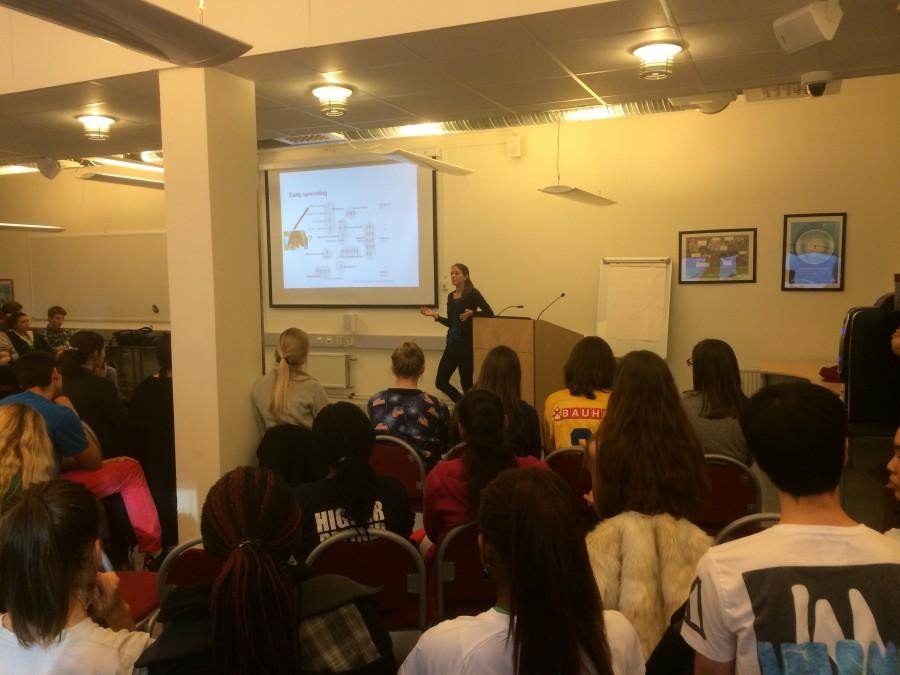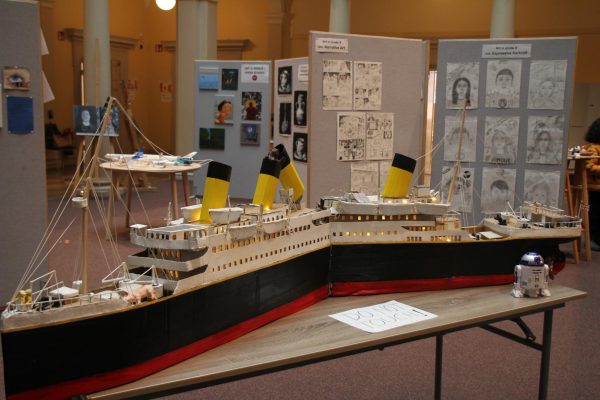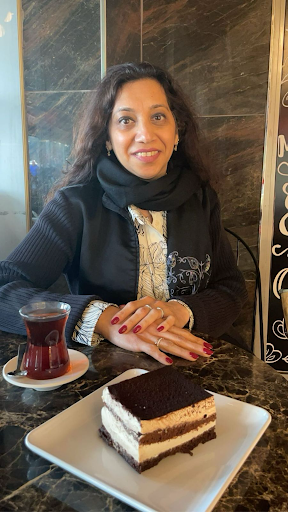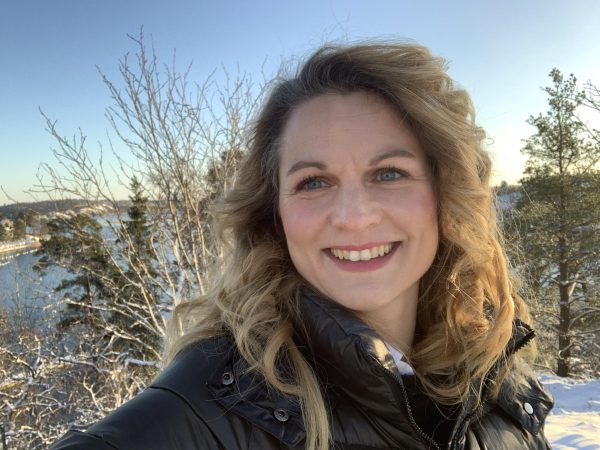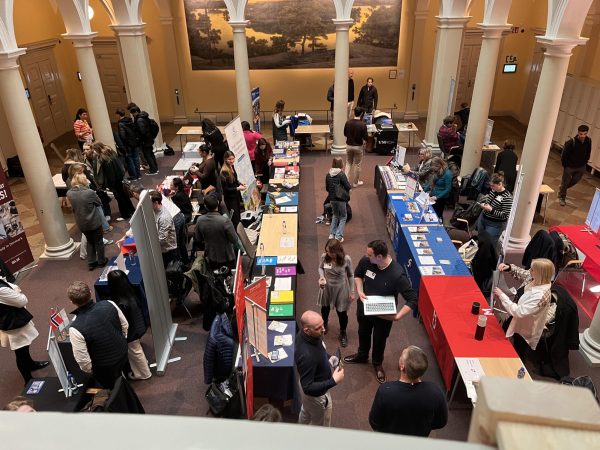Ebola: On the Front Lines
Helena Nordenstedt comes to SIS.
You could not pick up a newspaper last year without reading, “Ebola.” From rational analysts worrying about the effect it would have on the long term economic and social development of Liberia and Guinea, to the restless zombie apocalypse enthusiasts getting their survival kits ready for a global outbreak. Whoever you were, and regardless of how you thought it would all end, you were interested.
It is a long standing tradition that a guest speaker visits SIS during UN day. The theme of the presentation corresponds to the theme of the SISMUN conference, which takes place in February. This year the topic, “Disease – Sharing Responsibility for Prevention and Treatment,” was chosen. As the SIS community prides itself on its global citizenship and international mindedness, it is fitting that for UN day we celebrated that by inviting a speaker to give a presentation about Ebola. After all, the Ebola outbreak was an excellent example of global cooperation in solving a major global health challenge.
SIS was honoured this UN day to get a visit from Helena Nordenstedt. A researcher at Karolinska, she was in Guinea and Liberia last year working with patients at Doctors Without Borders treatment centres. She risked her life to prevent Ebola from spreading out of those countries.
Dr. Nordenstedt started her presentation by telling us why she became a doctor, and went on to talk about her work with Ebola, as well as giving us an insight into the scientific side of the disease and the outbreak itself.
A theme of Dr. Nordenstedt’s presentation was countering the out of proportion panic the Ebola epidemic caused. She maintains that newspapers, desperate for a headline, blew the outbreak way out of proportion.
After all, this was not the first Ebola outbreak, as the disease has periodically appeared since its discovery in 1976. Furthermore, the disease is not very contagious. “You can’t catch Ebola on a bus,” says Dr. Nordenstedt, as the disease is not air born like the flu, but rather transmitted through bodily fluids like blood, so you need to do more than be near a person to become infected.
You can’t catch Ebola on a bus.
— Dr. Nordenstedt
Despite the over reaction, Ebola still is a very deadly, dangerous and terrible disease. Our guest speaker admitted that the first time she was entered the treatment centre, she was terrified. She had to spend 15 minutes putting on her protective suit, and the medical staff had to take constant precautions so that they would not get infected.
Dr. Nordenstedt was quick to praise the local doctors and workers; in her treatment centre in Guinea she was the only non-African doctor. They had risked their lives to help the patients, and have been inappropriately forgotten by most Western newspapers.
Despite their valiant efforts, there were of course always sad times, and some patients she started to bond with and care about lost their lives. Dr. Nordenstedt reaffirmed the importance of human interaction during treatment; she pointed out since the protective suit covered everything but the eyes, it was difficult to communicate with the patient or to smile reassuringly.
At the end of a presentation, we were told a story of a boy whose body was strong enough to fight the virus, but who seemed to be losing hope. Then they started interacting with the boy, and gave him paper to draw, and he soon regained his spirit and beat the disease. His hand print is on the Doctors Without Borders Ebola survival wall.
If there is a future Ebola outbreak, or of any other disease, we can be comforted by the knowledge that people like Dr. Nordenstedt are putting themselves at enormous risk to keep us and the world safe.


